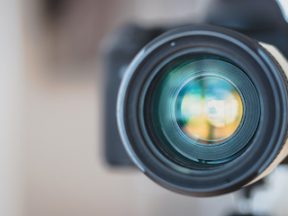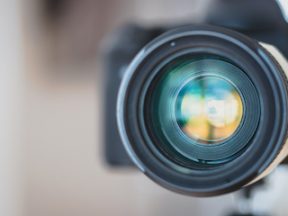Choosing the best camera lens depends on the products you’re shooting and on the camera itself.
This is the sixth post in my series to help ecommerce merchants take better product photos. “Part 1” addressed the importance of backdrops. “Part 2” explained tripods. “Part 3” examined the fundamentals of artificial lighting. “Part 4” reviewed angles and viewpoints, and “Part 5” described how to select a camera.
In this “Part 6,” I’ll address lenses.
Cropped Sensor vs. Full-Frame
A camera’s sensor is the electronic equivalent of film. It captures light and converts what you see through a viewfinder into an image. A sensor impacts the lens. A full-frame sensor is a true representation of the lens’s focal length — how much of the viewfinder is captured in the image. A cropped sensor captures less than the focal length.
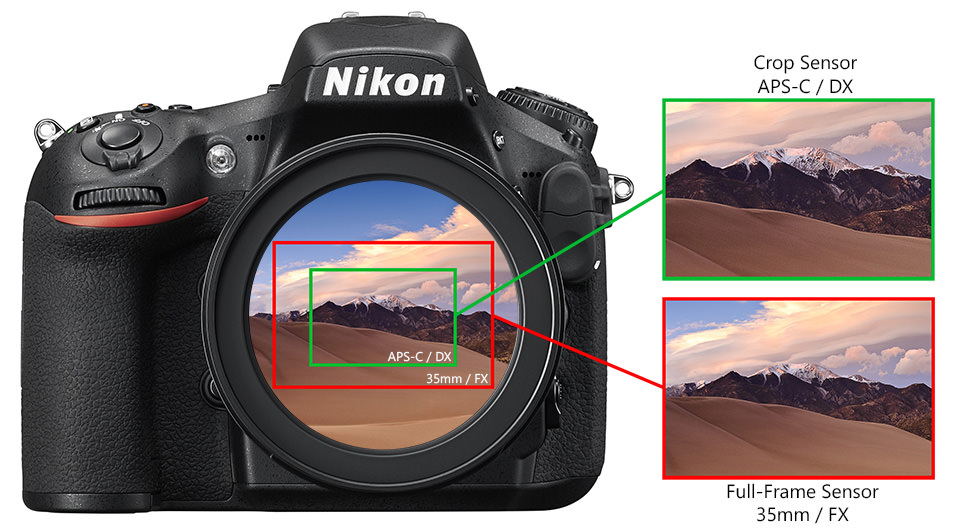
A full-frame sensor is a true representation of the lens’s focal length — how much of the viewfinder is captured in the image. A cropped sensor captures less than the focal length. Source: PhotographyLife.com.
A crop factor is the ratio of a camera’s sensor size to a 35mm film frame. A camera with a crop factor of 2x means a 35mm film frame is twice the size of your camera’s sensor. This could affect your final images because a cropped sensor will multiply the focal length of any lens you’re using by its crop factor.
For example, a crop factor of 1.5x with a 50mm lens will replicate a 75mm lens. This added focal length will produce a more narrow angle of your product and could overshoot your desired field of view. In this example, if you needed to shoot a product using a 50mm lens, you should have chosen a 35mm lens to get closer to your desired focal length of 50mm.
But what exactly is a focal length, and how does it affect your lens choice?
Focal Length
The focal length of your lens determines how much of a scene your photo will capture. Photographers call this the “angle of view.” It works in tandem with the magnification to produce an image that will appear very large or very small depending on the focal length.
A longer focal length produces a more narrow angle of view and higher magnification. Conversely, a short focal length produces a wider image with less magnification.
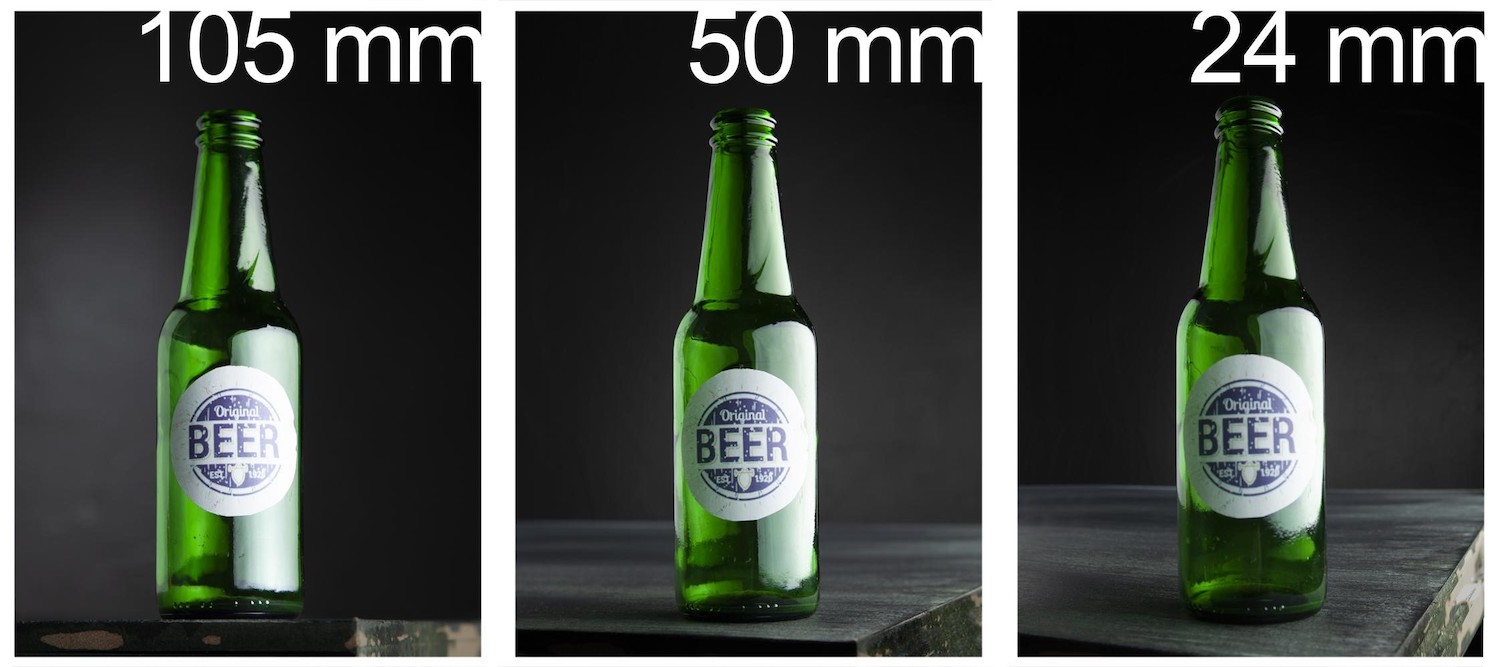
A longer focal length, such as the 105mm at left, produces a more narrow angle of view and higher magnification. A short focal length, such as the 24mm at right, produces a wider image with less magnification. Source: Freepick.com.
Understanding focal length is important in product photography because the goal is sharp, magnified images that display important details. That’s why you should not use a wide-angle lens. Instead, use a lens of at least 50mm. Anything smaller than 50mm could produce wide-angle distortion. For product photography, I typically use a telephoto lens of 85mm or higher with a good lens speed for depth of field.
Aperture
Aperture, or lens speed, refers to the maximum opening of a lens. Aperture is expressed in an f-number, or f-stops. An f-stop of f/2.0 will allow more light than, say, an f/8.0. Some photographers recommend a low aperture value in product photography to avoid blurring important details.
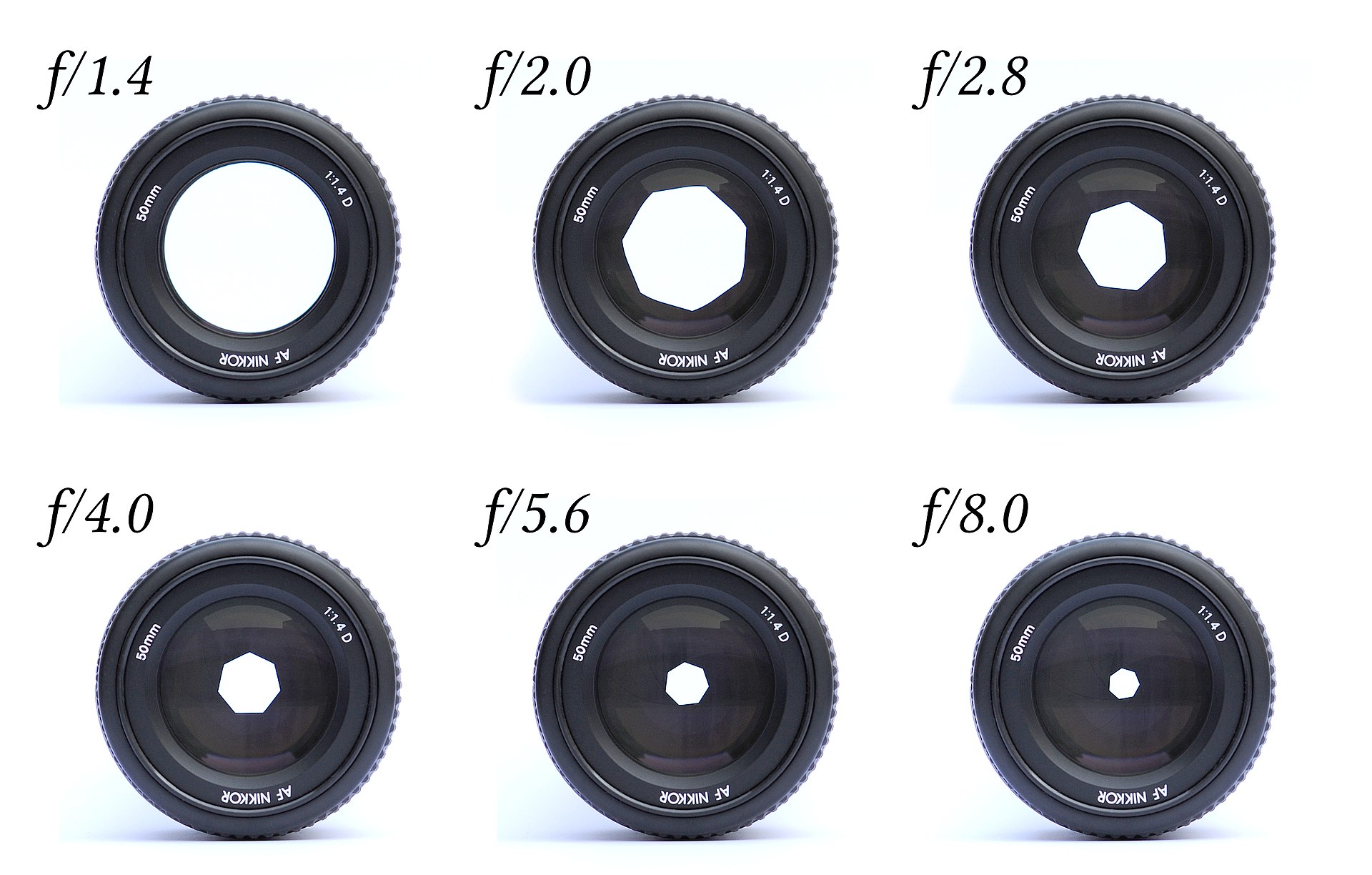
Aperture refers to the maximum opening of a lens and is expressed in an f-number, or f-stops. An f-stop of f/2.o will allow more light than, say, an f/8.0. Source: Wikipedia.
But if you’re shooting for Amazon or your own ecommerce store, use f/7 to f/11 to keep the details in your shot focused. But your perfect aperture value depends heavily on the product you’re shooting.
Lens Types and Classes
The final point is understanding the two types of lenses. Prime lenses have a fixed focal length and produce sharp images with excellent contrast. Zoom lenses have a variable focal length, which makes them versatile.
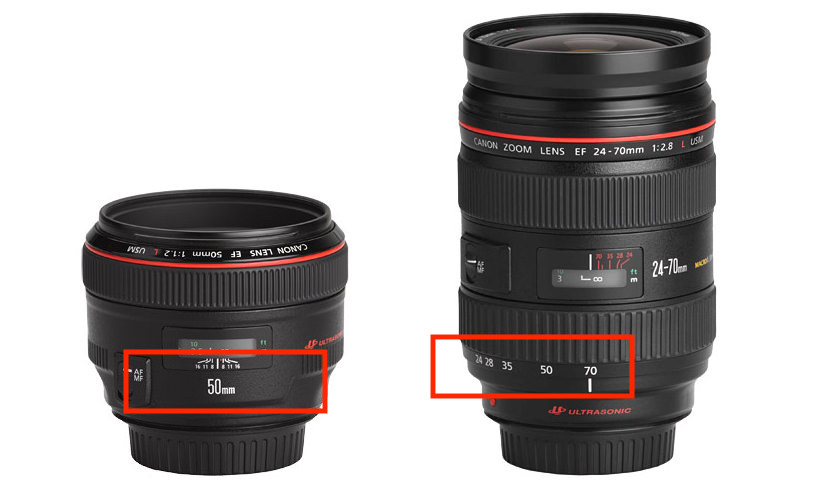
Prime lenses (at left) have a fixed focal length and produce sharp images with excellent contrast. Zoom lenses (at right) have a variable focal length, which makes them versatile. Source: PhotographyLife.com.
While a quality zoom lens can produce exceptional images, the lens’s variability can create distortions. This is why I prefer fixed lenses for most product shoots. A fixed lens will produce naturally sharper images in most cases.
Withing the two lens types are three main classes:
- Wide-angle lenses have a focal length of up to 30mm.
- Standard lenses have a focal length of up to 50mm.
- Telephoto lenses have a focal length of over 100mm.
There are also divisions of these lenses, such as ultra-wide zoom and super-telephoto, and specialty lenses, such as macro and tilt-shift lenses. I’ll address these in the next installment.
Remember, too, that camera brands such as Canon, Nikon, and Sony make their own proprietary lens. Independent producers, such as Sigma, make excellent third-party lenses that are worth investigating if you’re on a budget.


